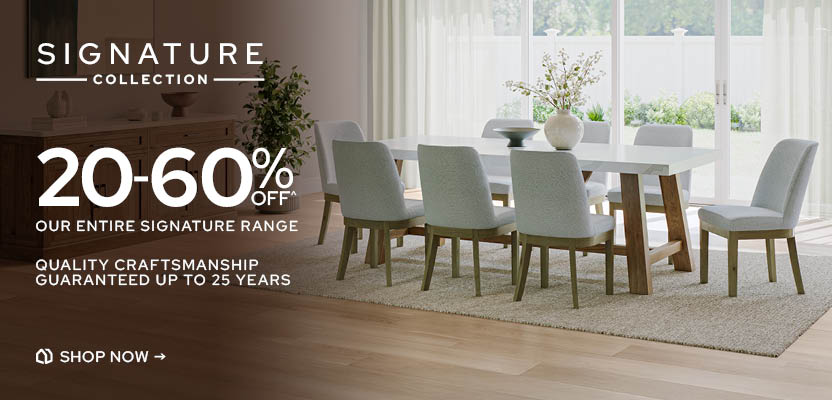-
NEW
NEW
Shop All -
Living Room
Living Room
Shop All -
Dining Room
Dining Room
Shop All -
Bedroom
Bedroom
Shop All -
Nursery & Kids
Nursery & Kids
Shop All -
Office & Storage
-
Outdoor
-
Home Décor
Home Décor
Shop All -
Signature Collection
Signature Collection
Shop All -
Online Exclusive
Online Exclusive
Shop All -
SALE
-
-
NEW
- New Arrivals
- Trending
- All NEW
-
Living Room
- Lounges & Sofas
- Seating
- Storage
- Lounge Care & Cleaning
- All Living Room
-
Dining Room
- Storage
- Dining Sets
- Dining Tables
- Dining Seating
- All Dining Room
-
Bedroom
- Beds, Bedheads & Bed Frames
- Mattresses
- Bedding & Manchester
- Bedroom Storage
- Discover the Amart Sleep Zone
- All Bedroom
-
Nursery & Kids
- Nursery Furniture
- Nursery Bedding & Manchester
- Kids Furniture
- Kids Bedding & Manchester
- Kids Decor
- All Nursery & Kids
-
Office & Storage
- Desks
- Office Chairs
- Office Storage
- Gaming
- All Office & Storage
-
Outdoor
- Outdoor Dining
- Outdoor Lounges
- Outdoor Accessories
- All Outdoor
-
Home Décor
- Home Accessories
- Rugs
- Wall Decor
- Plants & Pots
- Perago Home
- Curtains & Blinds
- All Home Décor
-
Signature Collection
- Signature Dining Room
- Signature Living Room
- Signature Bedroom
- Signature Outdoor
- All Signature Collection
-
Online Exclusive
- Online Exclusive Living Room
- Online Exclusive Dining Room
- Online Exclusive Bedroom
- Online Exclusive Office & Storage
- Online Exclusive Outdoor
- Online Exclusive Home Decor
- Online Exclusive Clearance
- All Online Exclusive
- SALE
-
You must login or create an account to add items to your wishlist.
You must login or create an account to add items to your wishlist.













